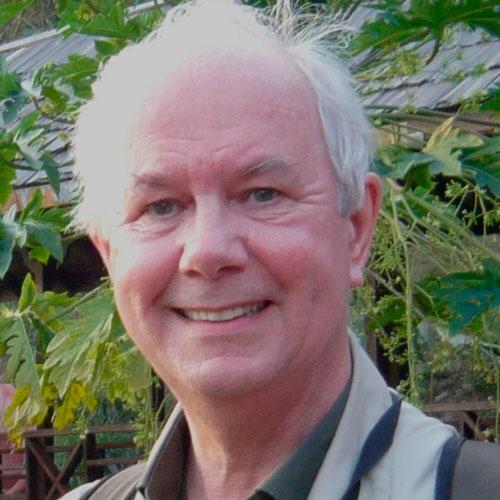Walk along any city street and you’re overwhelmed by signs proclaiming the importance of banks, greengrocers, fast food, and a thousand other professions. But it’s easy to imagine that maths is irrelevant to today’s world – supermarkets don’t sell mathematics in a can.
Actually, maths underpins our daily lives in thousands of ways. The equations of aerodynamics are vital to aircraft design. Navigation depends on trigonometry. The development of new medicines relies on statistics.
We seldom notice the maths because nearly all of it goes on behind the scenes, but an awful lot of people do need to know the maths to make these things work.
Read more about mathematics:
- Five of the most famous mathematicians you’ve (probably) never heard of
- Bird behaviour revealed using Alan Turing's mathematical models
Maths opens up a huge variety of rewarding careers, both intellectually and financially. A 2012 survey revealed that the 10 per cent of the British workforce employed in mathematical science occupations were punching above their weight, contributing 16 per cent of the UK economy.Maths also made Larry Page and Sergey Brin multi-billionaires when they used it to invent the algorithm behind Google.
Despite what some say about calculators, computers don’t make maths obsolete. Instead, their ever-increasing power opens up new opportunities to apply it, such as Artificial Intelligence. A smartphone is maths incarnate.
Many applications use mathematical methods invented specifically for that purpose, but a few rely on maths that originated for totally different reasons, often just because of a mathematician's fascination with following their nose.
It is these that I find particularly interesting, because they warn us not to become obsessed with ‘goal-oriented’ science. Imagination and serendipity are valuable too.
From maps to minds
In 1700, the great mathematician Leonhard Euler turned his mind to a curious little puzzle.
The Prussian city of Königsberg – which is now the Russian city Kaliningrad – was situated by a river, had two islands and was joined by seven bridges. Was it possible to walk through the city, crossing each bridge exactly once?

Euler solved the problem – the answer was ‘no’ – but his work also solved similar scenarios, for any arrangement of islands and bridges.
It was his work that led to a new branch of mathematics: ‘graph theory’ or ‘network science’. The maths of networks has gone on to have a huge range of applications (and career options), because networks are ubiquitous: from neurons in the brain to commodities in an economy, public transport planning and electrical power grids.
Graphs and global organ swaps
A more recent application of maths is in helping patients to get life-saving kidney transplants.
Humans have two kidneys, but we can function well with only one, so transplants can be obtained from a living donor – usually a close relative, because few of us will sacrifice a kidney for a stranger. However, the donor and recipient must have matching tissue types to prevent the patient's body rejecting the new organ, and while relatives are more likely to give a match, they often don’t.
Changes to the law have made it possible to set up kidney swaps. which, you guessed it, are underpinned by mathematics.
Say Alfred is willing to donate a kidney to Amelia, and Belinda is willing to donate a kidney to Brian. Unfortunately, Alfred and Amelia's tissue types don’t match, and neither do Belinda and Brian – so no one gets a new kidney.
Read more about transplants:
- New technique 'saves up to 70 per cent' of donated livers for transplant
- Transplants of retinal cells could treat blindness
But suppose that Alfred has the same tissue type as Brian, and Belinda has the same type as Amelia. Then Alfred could agree to donate to Brian, provided Belinda donates to Amelia. This benefits everyone.
Prof David Manlove turned the kidney-swap problem into a question about a graph, which meant mathematicians could develop powerful algorithms to calculate optimal combinations of donors and recipients. These more complex chains of swaps open up new possibilities for patients, and the algorithms are now routinely used by the UK’s National Health Service.
The numerical digits that became dragons
After a more glamorous role? You might be surprised to learn that maths provided the basis for computer graphic imagery, or CGI.
Picture your favourite scene from Avatar, or Game of Thrones. Whatever example of CGI comes to mind, whether movie or computer game, artistic abilityis a key ingredient. But less evident is the essential role of maths, which provides the techniques that make CGI practical and realistic.
Some methods are so new that they haven’t yet been published, while some CGI in movies – including Pixar's Toy Story – has led to dozens of new research papers in maths. It was only a few years ago that the mathematical heat equation was applied on a curved surface to make textures join smoothly. But one principle goes back 178 years.

It was never intended for computer graphics. There weren’t any computers in those days. It was conjured into existence by the Irish mathematical prodigy Sir William Rowan Hamilton.
In Hamilton’s day, mathematicians had solved a huge number of problems in two-dimensional physics using so-called complex numbers, where minus one has a square root. This gave Hamilton an idea that became an obsession: find a new system of numbers that does the same for three dimensions, and the whole of realistic physics is wide open.
We now know that such a number system doesn’t exist, and eventually Hamilton settled for one that has four dimensions, not three, and it breaks one of the rules of algebra: that x times y is the same as y times x.
He called his numbers ‘quaternions’ and promoted their use in many areas of mathematics and physics, but they soon went out of fashion as simpler methods appeared.
But in 1985, mathematician Ken Shoemake realised that quaternions are ideal for rotating graphical objects in three-dimensional space. Today, they're widely used whenever a CGI object, such as in incoming dragon, spins, twists, or turns. Hamilton would have been astonished – after all, in his day there were no movies.
Mathematics is a boundless, hugely creative system of ideas and methods. It lies just beneath the surface of the transformative technologies that are making the 21st century totally different from any previous era. Which is why you can use it to make a lot of money, if so inclined.
About our expert
Ian Stewart is a professor of mathematics at the University of Warwick and a fellow of the Royal Society.
His new book What’s the Use? The Unreasonable Effectiveness of Mathematics (£20, Profile) is out 19 August 2021.
- Buy nowfrom Amazon UK, Bookshop.org and Waterstones
